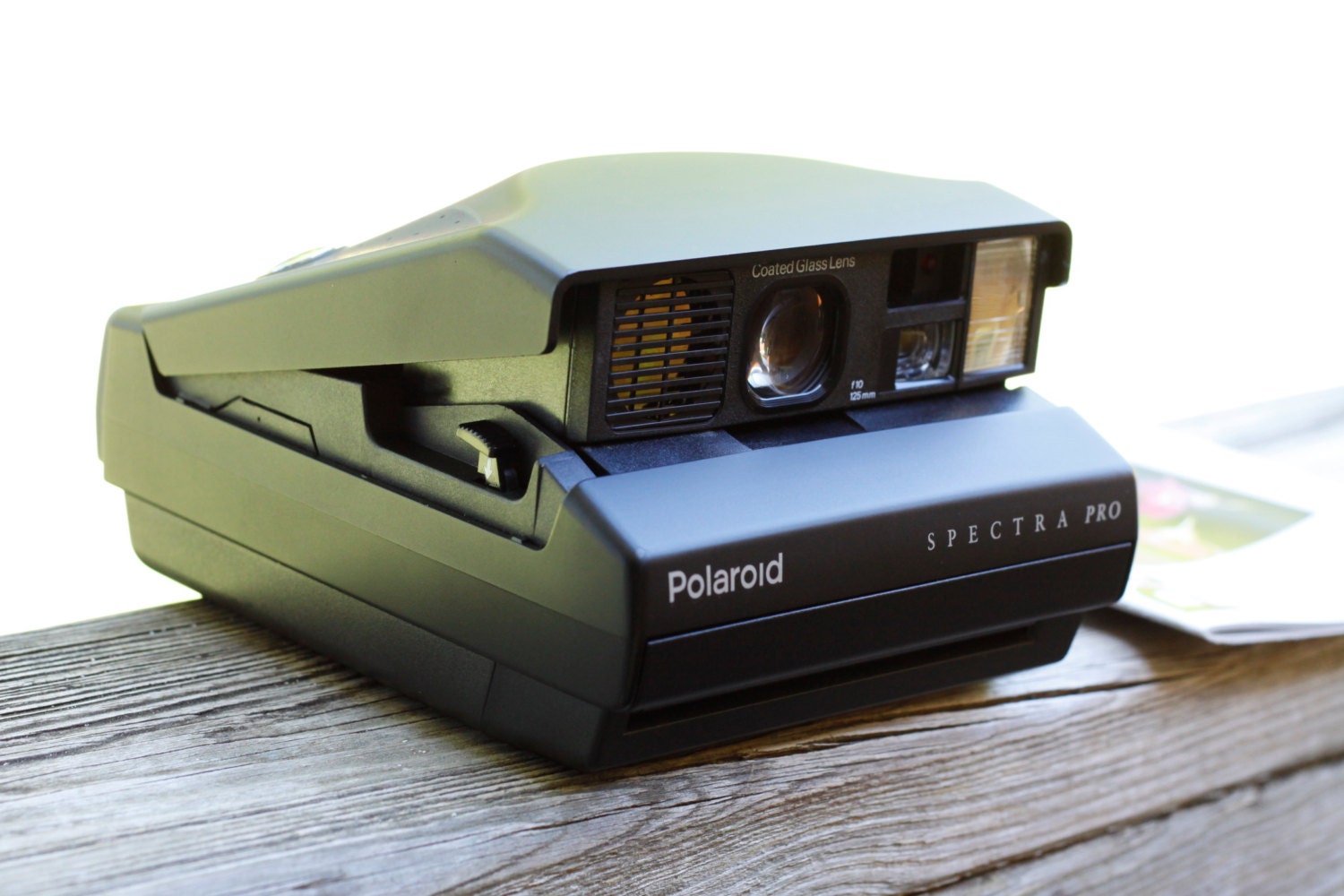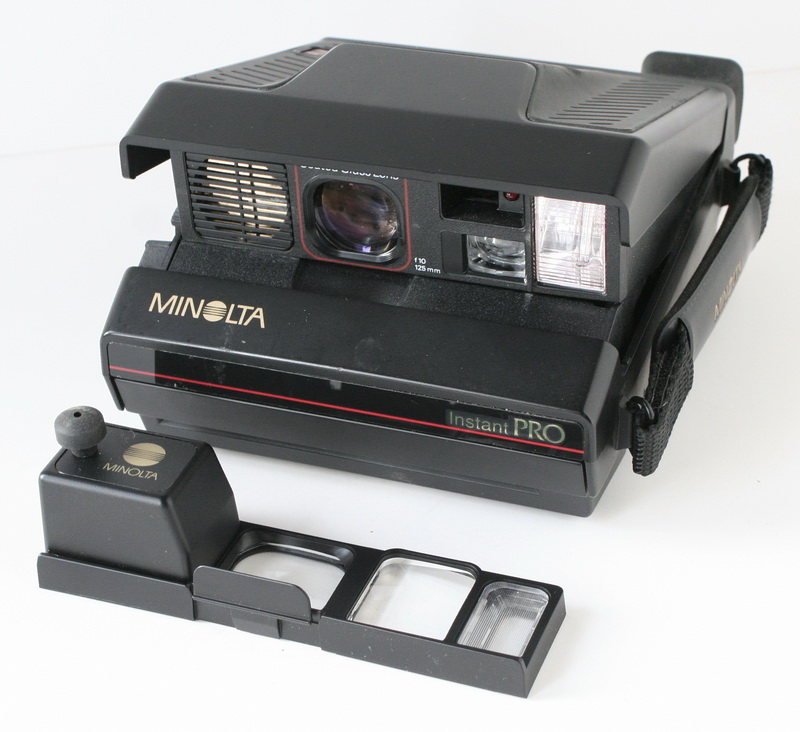

The Minolta version shows less tendency to deterioration, in my experience, so either search out the Instant Pro (as shown here) or just try to find a copy that’s not yet worn out. Enterprising souls can replace these pads with their own cut leatherette or other preferred material, but this is a DIY project that not all will be eager to tackle. On top and bottom, the camera has a sort of rubberized pad glued to the body, and these pads in 2017 are nearly always worn, scraped, and deteriorating. Where the camera fails the durability test is in its soft-touch exterior pads. To close, pull back on the opening switch and press the top of the camera evenly back into the body. Two things to note regarding the camera’s opening mechanism – one, it locks into place when opened, and two, failure to release the lock when trying to close it will break the camera. The action is surprisingly springy and everything clicks into place with much more direction than we’re accustomed to in a Polaroid machine (sans the original SX-70, which is nearly mechanical perfection). Instead of a large flash bar hinging upward to reveal the lens like in the 600 series, this camera’s top simply pops upward a few centimeters to form a wedge shape. This is likely a result of the simpler clamshell design of the Spectra camera. Without question it feels more resilient than the integral cameras in the fragile SX-70 and floppy 600 series, which possess all the strength of a graham cracker. Yuck.īuild quality is pretty excellent, for a plastic Polaroid. The Pros are cameras that are nearly the polar opposite of Polaroids that came later, those bulbous, rounded globs of plastic that so dominated the ’90s.

The body is a low-sheen, almost satin black, a choice that’s understated and appealing. The accents are typical-for-the-time in gold and red, and emphasize the bits that matter, like that proudly advertised coated glass lens. Like a classic e30 BMW, there’s nothing here that doesn’t need to be here. There’s that classic ’80s aesthetic happening here, in which angles are sharp and superfluity is eschewed.

What’s Spectra today? For starters, a totally usable camera that’s worth your attention.Īesthetically, both machines are things of beauty (if you’re one who enjoys Polaroid machines). It doesn’t sound like much, but this was a big difference. These machines also offered better construction, sharper lenses (glass, no less), and more features than their predecessors – all great selling points when we’re talking cameras.īut that was thirty years ago. The classic, white-framed 78 x 78mm square images made on SX-70 and 600 film were dwarfed by the new Spectra film, which produced an image area of 92 x 73mm. With flash, focus, and exposure controls, as well as crazy features like timed interval shooting and a multiple exposure mode, these two machines just may be the best Polaroid camera for today’s shooter.īut what the hell is a Spectra? Launched in 1986, Spectra was both Polaroid’s new film format and their new camera created to address complaints that all integral Polaroids made up to then produced images that were just too small. These cameras were essentially the same as one another (though the licensed-from-Polaroid Minolta does have a superficial edge in durability – more later), and they’re two of the most user-adjustable Polaroid cameras ever made. In 1990, Minolta and Polaroid both released an improved version of the Spectra camera called the Instant Pro and Spectra Pro, respectively.


 0 kommentar(er)
0 kommentar(er)
